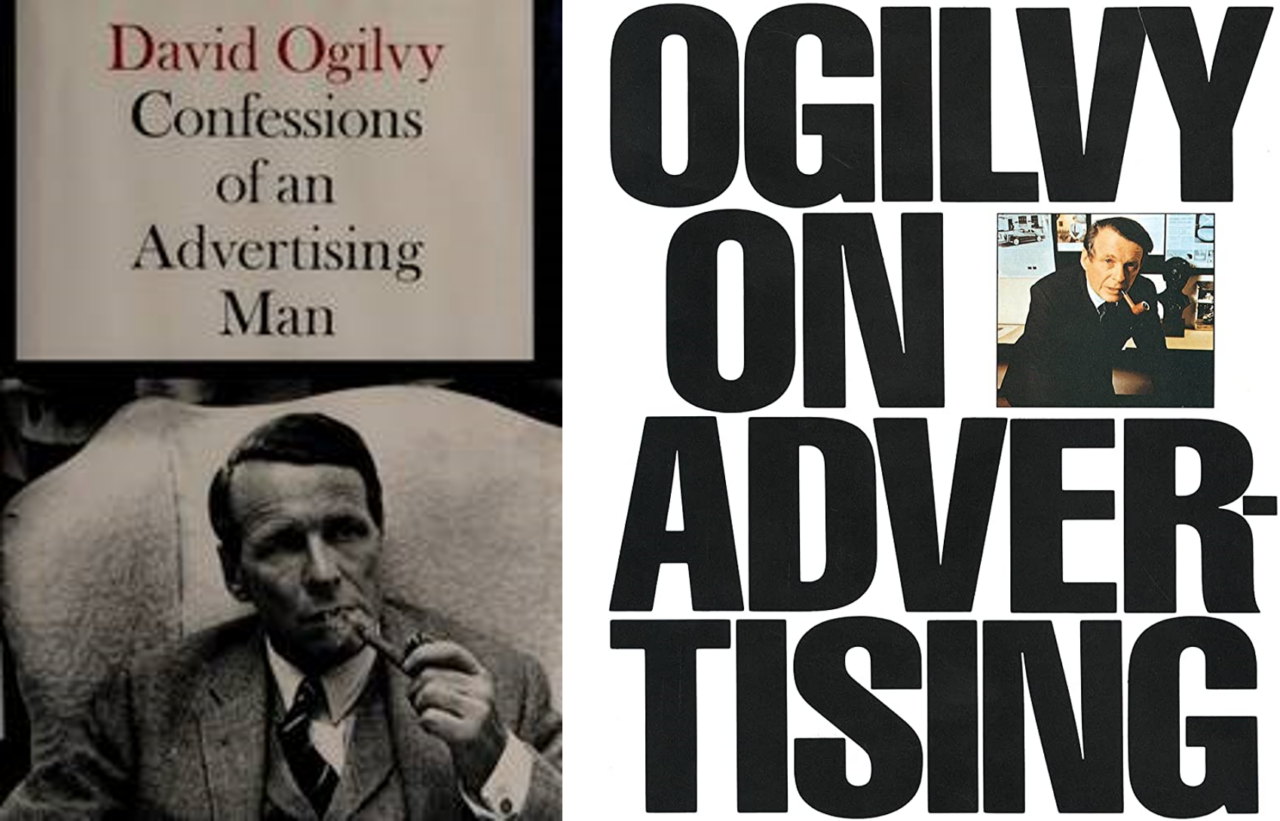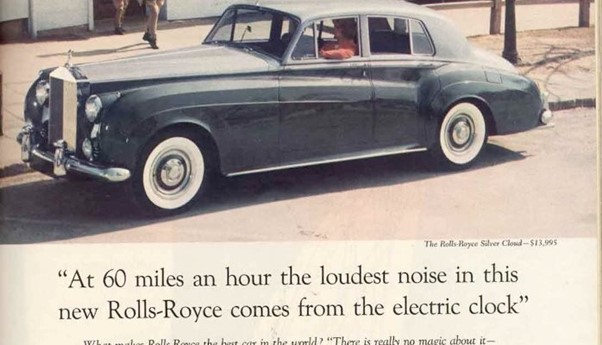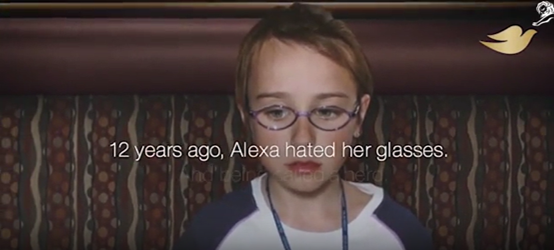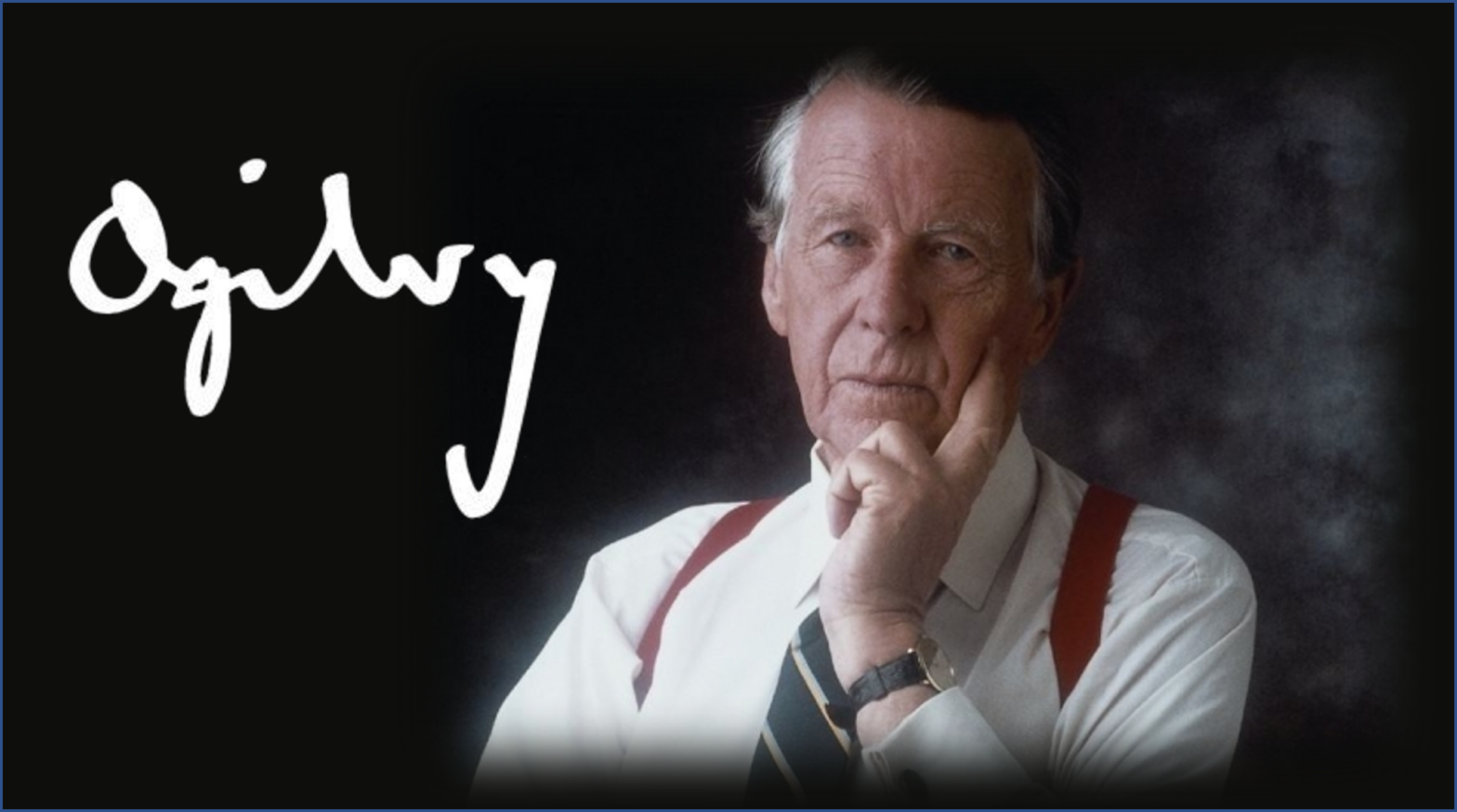Ogilvy was guided above all by his rationality and his ability to create advertising campaigns that actually made people buy the advertised products. This was his main goal and idea. His revolutionary approach was based on the philosophy that advertising must be based on scientific and psychological principles. Although in his time he did not have the analytical tools that today's marketers use, he liked to observe the behaviour of the target group in order to detect their problems and then offer them a solution in the form of a product. Which is a technique that we still commonly use in marketing today and is quite demonstrably workable. He used facts as a weapon and brought out the best qualities of the product. In the light of everything stood the benefit that the customer gets. This is beautifully illustrated, for example, in his advertisement for Dove soap, which was supposed to solve the biggest soap problem of its time - dry skin. The idea was in many ways similar to that promoted by Steve Jobs many years later: you're not selling a product, you're selling a feeling.
FROM POTS TO MARKETING
David Mackenzie Ogilvy was born on 23 June 1911 in the UK. He is often referred to as the father of modern advertising and is considered one of the most important figures in marketing. He developed his art of advertising from the 1940s onwards, and over the course of his career he became not only one of the most respected advertising creators, but also the author of many books that still serve as the bible of functional marketing. Among his best-known works are the titles Ogilvy on Advertising and Confessions of an Advertising Man.
This marketing giant's journey to advertising has been more than interesting and chequered. After graduating from Oxford University, Ogilvy worked in a variety of fields - including as a kitchen pot salesman. In 1938 he moved to the United States to work for the New York advertising agency Mather & Crowther, where he gained his first professional experience of the world of advertising. In 1949, he founded his own advertising agency - Ogilvy, Benson & Mather - with only $6,000 in capital. This agency later became one of the most important advertising agencies in the world. Ogilvy's career was full of success and big names. He did ads for brands such as Rolls-Royce, Dove and Schweppes.
THE CUSTOMER ISN'T STUPID, HE'S YOUR WIFE
David Ogilvy's contributions to the advertising industry still resonate through the marketing world today. His ideas and practices are still relevant today, but back then they were innovative practices that changed the way advertising was done and how people viewed it.
His mantra was:
- FOCUS ON THE CUSTOMER. Ogilvy understood the importance of understanding the target market and so created ads that were tailored to the needs and wants of customers. Today, this rule seems obvious to us, but before Ogilvy, there was generally more emphasis on the product than on the consumer.
- PLAY ON EMOTIONS. Focusing on the customer's emotions helped Ogilvy reach people not only rationally but also on a feeling level. This gave his ads a more personal touch and made them more memorable to viewers.
- BE FUNNY. David Ogilvy believed that the best ideas initially come as a joke. He encouraged his colleagues and creators to be as funny as they could be in their campaigns. Humor also went hand in hand with his desire to make campaigns creative and original.
- ENGAGE CUSTOMERS. The father of advertising believed that rather than trying to appeal to the masses, it was better to speak to the customer one-on-one. Not only did he always try to understand and listen to his target group, but then he also gave the impression through the campaign that he was speaking to them individually in a language that they themselves understood and spoke.
- DON'T UNDERESTIMATE THE CUSTOMER. "It's not foolproof to imagine that the end customer is your wife, for example," Ogilvy proclaimed. He was trying to bring a fresh wind to the advertising industry in the form of respect for the intelligence of the potential buyer who will see through stupid and manipulative techniques and arguments.
NO SPECULATION - RESEARCH AND FACTSA work that is definitely worth reading and should not be missing from any marketer's or copywriter's library is undoubtedly Confessions of an Advertising Man, which has become a cult for many in the industry. The basic idea of the book is that advertising should not be based on speculation and conjecture, but on observation and facts. In addition to the need to know your client and their preferences, Ogilvy demonstrates in the book the idea that an advertising message must be clear, understandable and thus compel action - i.e., purchase. He also placed great emphasis on advertising copy, especially the quality and persuasiveness of the headline, which determines whether or not a person reads the rest.
Another very inspiring book is Ogilvy on Advertising. Here David Ogilvy focuses on the importance of researching customer needs and offers fascinating examples of successful campaigns. Ogilvy's original background in advertising writing and argumentative skills are significantly evident in this work. You will not only read interesting principles and ideas, but the book will draw you into the magical world of advertising marketing and help you understand it better. The key to success is simple and clear language.
 David Ogilvy, Confessions of an Advertising Man; On Advertising
David Ogilvy, Confessions of an Advertising Man; On AdvertisingHOW TO MAKE GOOD TV ADS
Ogilvy focused on making television advertising distinctive, memorable and based on a strong concept. At the same time, he paid close attention to visual execution and often used humorous elements that could appeal to viewers. In his book Confessions of an Advertising Man, he devoted an entire chapter to television advertising called How to Make Good Television Commercials. Here he describes the basic rules Ogilvy used in his TV campaigns and specific tips for creators. He points out the crucial influence of the visual aspect of the ad, which should be especially appealing to viewers and must capture the most central benefits and features of the product.
He also addresses the issues of casting and directing. He points out that the correct selection of actors and directors for a commercial is crucial and the professionalism of the team can greatly influence the success of the commercial. He also gives advice on how to create commercial spots for different industries (e.g. automotive or food) and offers examples for inspiration. This chapter remains a useful guide to creating effective television advertising. Which ideas are still at the forefront of Ogilvy's approach to advertising?
- WHAT YOU SHOW IS MORE IMPORTANT THAN WHAT YOU SAY. Advertising should work and sell even with the sound off. Ogilvy was used to relying more on words, given that he primarily did radio and print advertising. However, as I am told, he understood the importance of the visual aspect when creating TV commercials and that it was quite crucial in commercials.
- TELL what your product can do and what it offers at least twice in the spot. Make your product the "hero" of the commercial. He also advised to give the spot a strong story and content - not just drown the viewer in words.
- You have exactly 58 seconds to sell your product - GET RIGHT TO THE POINT. No unnecessary introductions and sell right up to the last minute.
- • AVOID CLICHÉS AND BANALITIES. The viewer won't be impressed, rather your ad will blend in with others that promise something they'll immediately forget.
David Ogilvy's Rolls-Royce ad is very simple, but offers a powerful message. It features a Rolls Royce Phantom with the following text: "At 60 miles an hour the loudest noise in this new Rolls-Royce comes from the electric clock." The slogan is meant to highlight the car's incredibly quiet powertrain, which is one of the Rolls Royce Phantom's most notable features. This advertising approach has become iconic and has shown how a simple but powerful message in advertising can lead to success. Ogilvy realised that TV ads were very expensive and had to be very effective to be profitable for clients. This famous Rolls-Royce campaign showed that customers were not only buying the product, but also the prestige and the feeling of luxury.
 Rolls-Royce advertisement, David Ogilvy, 1959
Rolls-Royce advertisement, David Ogilvy, 1959The idea came from research that led Ogilvy to discover that engineers who develop car engines monitor their volume with a stethoscope, and he immediately knew how to make the most of this information.
Another example of the simplicity and punchiness of an advertising message (this time in a TV commercial) is a 1980 spot for Dove soap. The spot focuses on highlighting the biggest competitive advantage - Dove soap won't dry out your skin. Ogilvy changed the strategy and the target audience. Instead of targeting men and emphasizing the cleansing and washing abilities of soap, he targeted women and their desire for soft and moisturized skin. A similar visual motif of regenerative soap in the form of lotion then appeared in Dove ads in the following years.
Video: Dove soap commercial, David Ogilvy, 1980
Already under the Ogilvy & Mather Toronto banner, David Ogilvy's legacy continued with an ad designed to show that beauty takes many forms and is primarily a reflection of how we feel inside. This spot was meant to help women stop comparing themselves to each other and start loving themselves as they are. The ad is considered groundbreaking because it was the first time women with different body types were shown in advertising and promoted acceptance of their own bodies, which is quite common today, but was a novelty at the time.

Video: Dove Soap commercial, Ogilvy & Mather Toronto - link here
The viral video "Behind the Leather" from the Advertising Agency: Ogilvy & Mather, Thailand is a very distinctive piece. In collaboration with PETA, this TV commercial aims to highlight the cruelty and unethical treatment of exotic animals in the fashion industry. The beating hearts inside the handbags and the fake blood that customers smeared on their hands and feet when trying on the crocodile skin shoes outlines the issue very expressively.
Video: Behind the leather, 2019
OGILVY IN THE CZECH REPUBLIC
The agency that David Ogilvy founded has spread around the world and grown to include many branches. One of them operates in the Czech Republic. The legacy of the advertising giant lies not only in cutting-edge campaigns, but also in continued market and marketing research. The 2020 study on Czech advertising provides many interesting insights that can still benefit creators today. According to this study, Czech advertising has lost its freedom and fun in recent years. On the contrary, it praises the improvement in the quality of production. A large number of rules are said to be behind the less freedom, but it is still possible to make attractive and effective advertising in the Czech environment today. The industry respondents are not in complete agreement on whether restrictions and regulations in television advertising are desirable or not.
EITHER YOU SELL OR YOU DON'T
"One day a hotel owner walked into Ogilvy's office demanding to promote an opening. He had only $500 in his pocket. Ogilvy bought postcards and sent invitations to everyone he could find in the phone book. The hotel was fully booked the first night after opening." That was David Ogilvy's secret weapon - direct marketing.
"We sell or else". A famous quote from the advertising great. David Ogilvy's knowledge has enriched not only the world of television advertising, but marketing in general and the field of copywriting, among others. Ogilvy was a man who knew how to do advertising simply and effectively.

